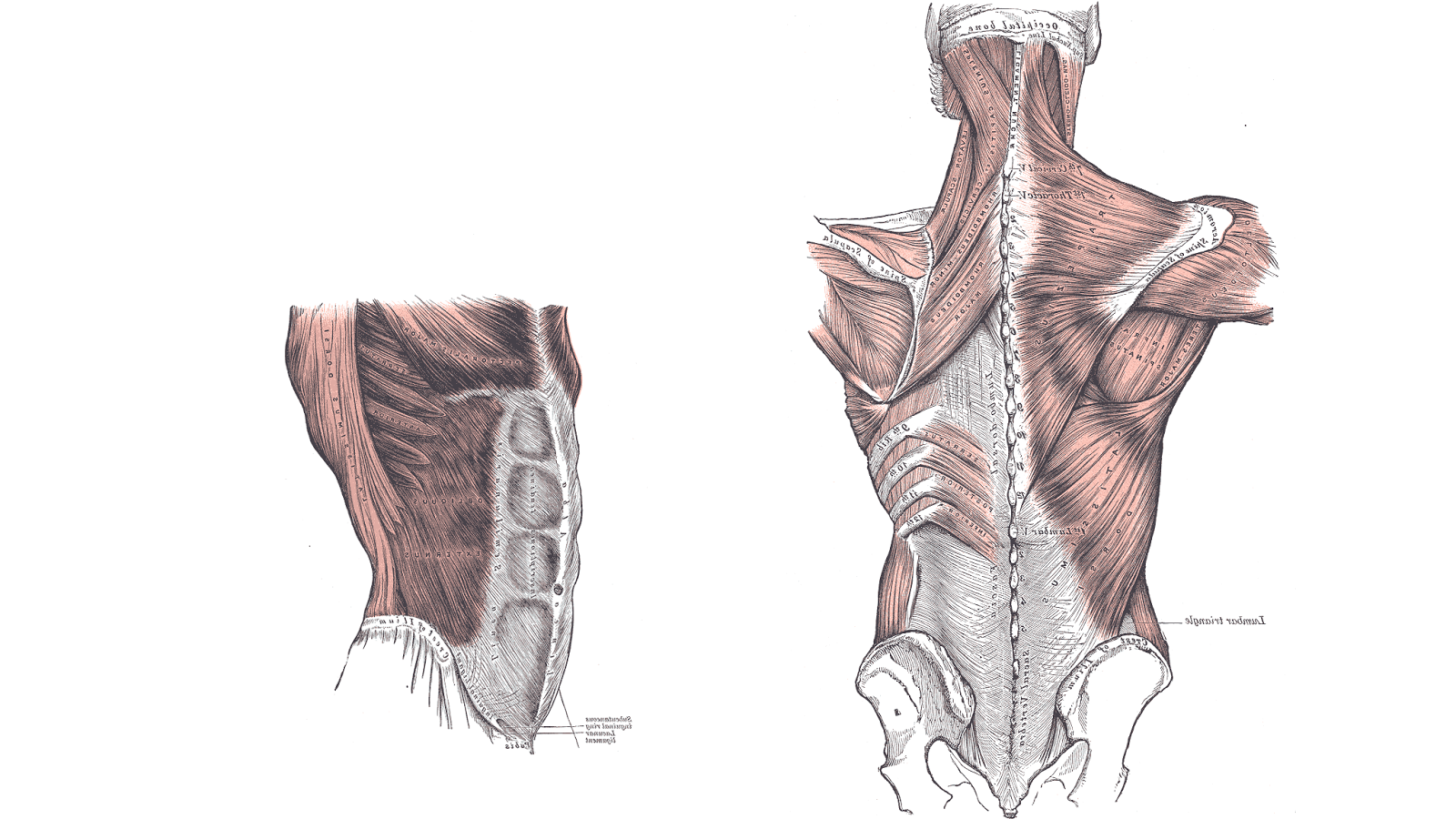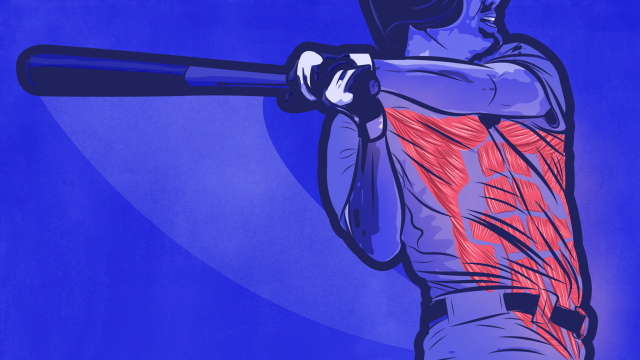Crunches and planks aren’t everything. If you want to strengthen your core, you need to think bigger. Your core includes all the muscles in your torso, from your shoulders down to your hips. And it does a lot more than help you sit up.
Illustration by Sam Woolley
Why a Weak Core Is a Liability
This weekend I took a TRX class. Most of the moves require you to keep your core steady while you grab the suspension trainer‘s straps with your hands, and do some kind of pushing or pulling motion. It’s an amazing full-body workout. But there was a guy at the end of my row who was there for the first time, and either couldn’t keep his core steady, or didn’t know how. His back would sag when he was supposed to be in a pushup position, or he would turn a row into a crunch. As a result, he wasn’t getting the most out of the exercises.
A strong core is important for runners and swimmers, too. Your body twists with every footstep or every stroke, so you need to keep your torso steady and strong. In fact, since your core is connected to your arms and legs, controlling your core helps to pull your arm through the water or stabilise your leg on the ground. Without a strong core, you can’t swim or run your best.
When I played roller derby, a strong core was essential to delivering a powerful hit. To shove someone with your shoulder, your body needs to be solid all the way from the floor to the point of impact — so that includes your legs and torso. If you go for a hip check instead, you might think you don’t have to worry about anything above your hips. But without strong, engaged core muscles, your upper body will flop around on impact, throwing you off balance.
Even if you aren’t body-checking people for a hobby, a strong core is important for everyday life. With it, you can move couches and shovel dirt without hurting your back. You can easily push open the heaviest doors. You can carry an angry child out of the museum gift shop while they flop around in your arms like a giant, dying fish. (Ask me how I know.)
On the flip side, without a strong core your time in the gym won’t pay off nearly as well. You’ll do crappy pushups. You’ll do crappy deadlifts. You’ll have bad posture. As you get older, you’ll have a harder time getting out of bed or up from the toilet. You’ll be more prone to falls. The stronger you are now, the better off you’ll be throughout your life.
What Your Core Actually Is

Shoulder muscles usually don’t count, but slmost everything else here does.
A lot of us conflate our “core” with that six-pack-shaped muscle in the front of our belly, called the rectus abdominis. And yes, you can feel that muscle tightening when you do crunches. But how does that train us for real life? Bending forward is just not something we need to do with a lot of force. But when the rectus abdominis teams up with all the other muscles of the core, it helps to hold our body steady in all kinds of positions.
That’s why planks are better than crunches: Done properly, a plank works all of your core muscles at once (plus your arms and legs too, for good measure). Each muscle is contracting, providing resistance for another muscle. The end result is a rock solid core. It’s the same situation as in many of our examples above, where you need to hold steady against some kind of outside pressure, whether that’s a hip check or a flailing child or a heavy door.
But there are far more ways to work your core than the old standbys of the plank and crunch. Let’s take a look at what muscles we’re really trying to target:
- The rectus abdominis bends you forward at the waist.
- The erector spinae, or back extensors, run lengthwise along your spine. They bend you backward at the waist.
- The internal and external obliques are two layers of muscle that wrap around your waist. Their muscle fibres are diagonal, so they are involved in twisting motions.
- The transverse abdominis is the muscle that helps you suck your stomach in. Think of it like a natural weightlifting belt: It helps to stabilise your spine.
- The multifidi are a series of muscles that connect the bones of your spine to each other.
- The quadratus lumborum lives deep inside your abdomen, and connects your pelvis to your spine.
Some trainers will consider your “core” to include nearby muscles too, like those of your hips and upper back. For example, your iliopsoas muscles connect your spine to your legs, and help you bring your thighs to your belly. You use them, for example, when you do sit-ups.
How to Work Your Core in All Directions
With so many muscles involved, you can see why sticking to crunches isn’t going to cut it. The good news is that almost any full-body movement works your core to some degree if you do it in good form. That includes push-ups, pull-ups and banging on a tractor tire with a sledgehammer. Here’s how to recognise some of the best moves for your core:
- You have to hold your core steady. This covers planks, and push-ups with good form (where your body is in a perfect plank all the way down). It also includes inverted rows, like in the video above.
- You use one arm or one leg so that your core has to adjust to the lopsided forces. Deadbugs and bird dogs are perfect examples.
- You hold a weight on one side of your body, to amp up the one-arm or one-leg challenge. For example, if you do dumbbell rows or presses with one arm at a time, your core has to engage to keep you from falling over. For a more extreme example, check out the Turkish get-up, or do one-sided farmer’s walks.
- You twist your body to make the move happen. A classic example here is a woodchopper, where a dumbbell or cable machine mimics the weight of an axe. You pull it diagonally across your body as if you are chopping wood. You can, of course, chop some actual wood for a similar workout. Or try a Russian twist (with or without a medicine ball) in place of sit-ups.
- You use an unstable platform. Instead of planking with your forearms on the floor, put them on a medicine ball, exercise ball or bosu instead.
With these moves, you don’t have to dedicate a day or a portion of your workout to core work. You’ll be working your core right along with the rest of your body when you do big, functional movements. If you prefer exercises that isolate specific body parts, that’s fine — but then make sure to take the time to work your core in a variety of ways.

Comments